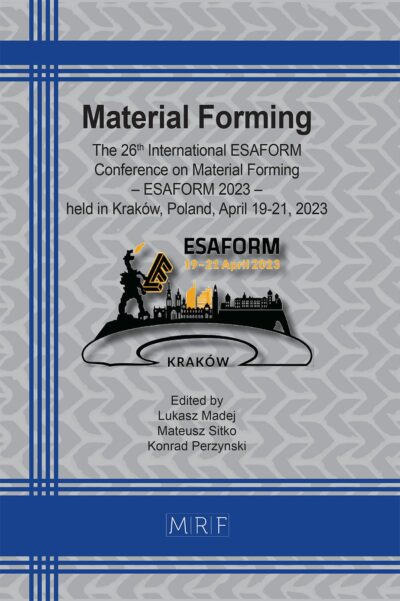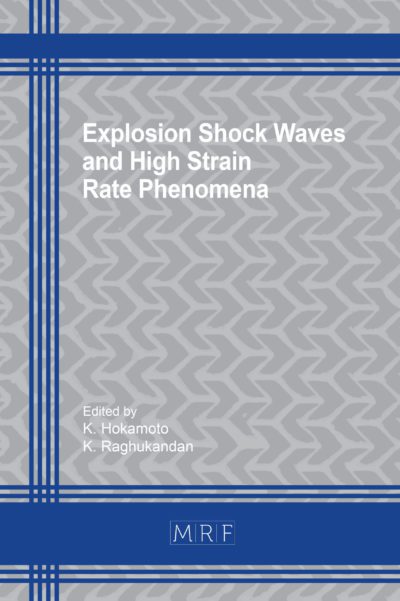Influence of Laser Power and Traverse Speed on Weld Characteristics of Laser Beam Welded Ti-6Al-4V Sheet
P.M. Mashinini, D.G. Hattingh
download PDFIn this paper laser beam welding was used for joining 3 mm Ti-6Al-4V alloy sheets in a full penetration butt-weld configuration. Laser beam power and traverse speed were the only parameters varied in an attempt to characterize the influence on weld integrity with specific reference to residual stress and microstructural modifications. The iXRD residual stress data showed a definite influence of traverse speed on residual stresses, with low traverse speeds resulting in an increased tensile residual stresses in the longitudinal direction of the weld whilst in the transverse direction residual stress revealed a more compressive stress state. The residual stress data for this experiment compared favourably with published residual stress data done by synchrotron X-ray diffraction. Weld joint integrity was further analyzed by evaluating the microstructure transformation in the weld nugget. These results revealed a degree of grain growth and the presences of fine acicular β (needle-like α) in prior β grain boundaries with increased traverse speed. Grain growth was predominantly influenced by the cooling rate which is associated with traverse speed. Additionally, the α -phase and β -phase were characterized in the various weld zones by electron backscatter diffraction (EBSD).
Keywords
Laser Beam Welding, Ti-6Al-4V, Traverse Speed, Microstructure, Residual Stress
Published online 4/20/2018, 6 pages
Copyright © 2018 by the author(s)
Published under license by Materials Research Forum LLC., Millersville PA, USA
Citation: P.M. Mashinini, D.G. Hattingh, ‘Influence of Laser Power and Traverse Speed on Weld Characteristics of Laser Beam Welded Ti-6Al-4V Sheet’, Materials Research Proceedings, Vol. 4, pp 59-64, 2018
DOI: https://dx.doi.org/10.21741/9781945291678-9
The article was published as article 9 of the book
![]() Content from this work may be used under the terms of the Creative Commons Attribution 3.0 licence. Any further distribution of this work must maintain attribution to the author(s) and the title of the work, journal citation and DOI.
Content from this work may be used under the terms of the Creative Commons Attribution 3.0 licence. Any further distribution of this work must maintain attribution to the author(s) and the title of the work, journal citation and DOI.
References
[1] A. O’Brien, C. Guzman, Welding handbook: Welding processes, Part 2, 9th ed., A. W. Society, Ed., 2007.
[2] J.C. Ion, J.C., Laser processing of engineering materials: Principles, procedure and industrial application, 2005.
[3] C.T. Dawes, Laser welding: A practical guide, Woodhead Publishing, (1 October 1992).
[4] R. Braun,C. Dalle Donne, G. Staniek, Laser beam welding and friction stir welding of 6013-T6 aluminium alloy sheet. Materialwissenschaft und Werkstoffechnik. 31(12): p. 1017-1026 (2000).
https://doi.org/10.1002/1521-4052(200012)31:12%3C1017::AID-MAWE1017%3E3.0.CO;2-P
[5] E. Akman, A. Demir, T. Canel, T. Sinmzçlik, Laser welding of Ti6Al4V titanium alloys. Material Processing Technology. 209(8): p. 3705-3713 (2009). https://doi.org/10.1016/j.jmatprotec.2008.08.026
[6] L. Migliore, Welding with lasers. Laser Kinetics. (1998).
[7] L. Reclaru, C. Susz, L. Ardelean, Laser beam welding. Timisoara Medical Journal. 60(1): p. 86-89 (2010).
[8] J. Liu, X.L. Gao, L.J. Zhang, J.X. Zhang, A study of fatigue damage evolution on pulsed Nd:YAG Ti6Al4V laser welded joints. Engineering Fracture Mechanics. 117: p. 84-93 (2014). https://doi.org/10.1016/j.engfracmech.2014.01.005
[9] P. Xu, L. Li, S. Zhang, Microstructure characterization of laser welded Ti-6Al-4V fusion zones. Material characterization. 87: p. 179-185 (2014). https://doi.org/10.1016/j.matchar.2013.11.005
[10] H. Liu, K. Nakata, N. Yamamoto, Microstructural characteristics and mechanical properties in laser beam welds of Ti6Al4V alloy. Material Science. 47: p. 1460-1470 (2012). https://doi.org/10.1007/s10853-011-5931-8
[11] PROTO Manufacturing. An introduction x-ray diffraction residual stress measurement. (2011).
[12] A. Steuwer, D.G. Hattingh, M.N. James, U. Singh, T. Buslaps, Residual Stresses, microstructure and tensile properties in Ti-6Al-4V friction stir welds. Science and Technology of Welding and Joining. 17(7): p. 525-533 (2012). https://doi.org/10.1179/136217112X13439160184196














